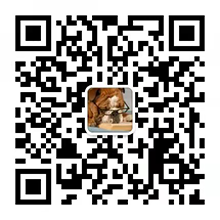be used to doing,表示的是习惯于做某事;used to do,表示的是过去常常做某事,现在已经不做了。
used to do和be used to doing
(1)used to do
否定形式:didn&39;t use to do 或 usedn&39;t to do
疑问形式:Did you use to do sth? Yes,I did.No,I didn&39;t.
如:My brother used to go swimming in the sea. 我哥哥过去常常在海里游泳;
否定形式:My brother didn&39;t use to go swimming in the sea.
疑问形式:Did your brother use to go swimming in the sea?
Yes,he did. No,he didn&39;t.
(2)be used to doing
如:I am used to having a cup of tea in the morning.
我习惯于早上喝一杯茶。
高中英语单词used
一、“used” 作为谓语动词
“used”单独做谓语动词表示过去经常,为谓语动词——一般过去时态(常态)。
示例如下:
1. He used to go to our school.
他曾在我们学校就读。
2. We used to go for a walk after supper.
过去我们总是在晚饭后去散步。
以上例句中的“used”都是独立的谓语动词,所以其后跟随的“to”为不定式符号,这就是“used to do”的由来。
二、“used”作为形容词
“used”是形容词,表达“习惯”的意思,而不是谓语动词,真正的谓语动词为Be动词。
如:
am/is/are used to 现在习惯于
was/were used to 过去习惯于
will/would be used to 将习惯于
示例如下:
1. I am used to the hot weather.
我习惯于热天气。
2. She is used to living in the country.
她习惯于住在乡下。
以上例句中的“used”是形容词,所以其后跟随的“to”是介词的“to”,并不是不定式符号,这就是“be used to doing”的由来。
注:如果把be used to理解成被动的话,也是成立的,则以上示例中的used to都是被动时态的主动词。
三、“used” 作为非谓语动词
“used” 作为非谓语动词完成态表示被动,其并不是独立的谓语。
示例如下:
1. A data queue object is used to send data from one program to another.
一个数据队列对象用于将数据从一个程序发送到另一个程序。
2. Some bread, cheese, carrot slices and pickled gherkin were used to create this locomotive.
这个火车头是用面包、奶酪、胡萝卜片、腌嫩黄瓜做的。
以上例句中的“used”是完成态,其结合“be”动词构成完整的谓语动词被动结构,因为“used”在这里是动词,所以后面接的“to”是不定式符号,这就是“be used to do”的由来。



